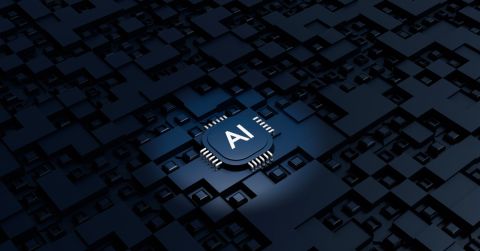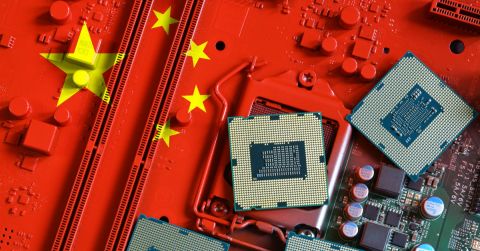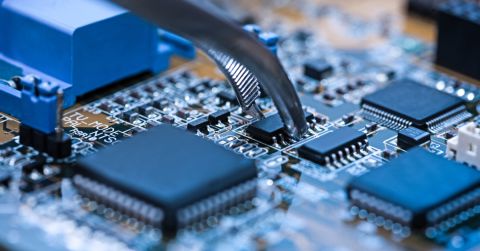AI in Electronics Design with Circuit Mind's Tomide Adesanmi

In this episode of The CTRL+Listen Podcast, we dive into AI in electronics design with our guest, Tomide Adesanmi from Circuit Mind. Circuit Mind enables electronics engineers to design reliable electronic systems faster and without errors.
We explore the challenges the team at Circuit Mind has faced in engineering their AI-based platform and the role that Nexar's API has played in its development. We chat about its functionality and how it's transforming the electronics industry. We also discuss trends in the electronic design industry, the effects of the shifting global supply chain on the electronics industry, and the increasingly important role that AI is playing in this space.
Listen to the Episode:
Watch the Episode:
Episode Highlights:
- AI: Supply Chain & Broader Electronics Industry Impact
- How the Nexar API Helps
- Computing Power Limitations?
- Implementation Process for AI
- UK Electronics Industry
Links and Resources:
Transcript:
James: Hi everyone, this is James from the Controllers and Podcast, brought to you by Octopart. I have my co-host Jo Joseph with me today, and we are joined by tame. He is from Circuit Mind, has some really interesting AI based software stuff to talk to us about today. Thank you for coming on the show.
Tomide: Thanks for having me, James.
James: Anytime. Do you wanna, just to start, maybe talk about yourself, the company, how it started and what the mission is and where it's heading?
Tomide: Yeah, thanks. Thanks a lot. So I'm Tomide, I'm the co-founder and CEO of Circuit Mind. Before Circuit Mind, I was an electronic systems engineer, so I used to develop high integrity augmented reality display systems. So hel helmet mounted display systems and heads up display systems for jet fighter pilots at a company called BAE Systems. I like to joke that I got tired of reading data sheets and that was one of the reasons why I started Circuit Mine. But seriously, the core idea behind starting Circuit mine was to help electronics engineers develop better circuits faster with less risk. And so, you know, I quit my job at, at BA Systems Circuit 2018, joined with my co-founder Basilio, who is a PhD in algorithm design. And we co-founded Second Mind, which is basically building algorithms, which is Basilio Specialty. My co-founder for electronics, which was my specialty before we started. So, you know, very excited to tell you more about kind of what we do today.
James:Great. Love to hear some more about that. Joseph, I know you had some questions around that functionality.
Joseph: Yeah. What were some specific pain points or challenges that led you towards using AI as a solution?
Tomide: Yeah, so there are a few different parts of the design and development flow that we, we try to touch on that, you know, I saw as problems. The first one is that when you think about component research, component research is quite sporadic and imprecise. So you start doing component research when you start a project and there are hundreds of thousands of components out there in the world. Some new, some kind of with different characteristics and capabilities. And the way you need to understand how they work is by reading data sheets. And so what we, what I found when I was kind of a, an engineer is that I didn't, I didn't do a comprehensive enough job, a thorough enough job on component research because, you know, on average I'd be looking at, you know, five data sheets per functional function, functional block. I was trying to kind of research a component for nothing more. And so that was kind of a sort of non thorough, imprecise kind of approach. That was one of the pain points. The second one was that component selection and schematic capture just takes a long time, takes weeks, assessing, you know, and you know, I was doing things like reading data sheets, looking at manufacturer websites, trying to assess pin and interface compatibilities, searching for available components. It's kind of brutal sometimes. And so that was also a pain. And then the, the third thing was that there was a lot of anxiety about whether you, whether I I I, I or other engineers could meet their design goals with the, in the best way possible because you can't truly optimize the design with this approach. So it took too long to optimize for whether it's the bomb cost or the power consumption or size or whatever. And then finally there's anxiety around the fact that you are always, you know, I've never seen a design done first time right in my, in all my time doing design. So you are always gonna find errors and you have to do a wrist spin and that adds a month or a component goes unavailable and you have to do a respin, find another component and that takes another month, you know, from your design cycle. So these were the main pain points that I kind of wanted to solve with the more integrated and automated approach to the early stage of the design process.
James: Awesome. And do you wanna sort of talk a little bit about the actual, I guess, functionality and the, the product itself that you're offering?
Tomide: Absolutely. So the platform, what we are building at Circuit Mind is a platform that is essentially algorithmic software that helps electronics engineers and managers go from architecture to circuit schematic in 60 seconds. And the goal is to help them get to market faster, avoid risk spins, create smaller, cheaper power efficient products, but again, architecture, the schematic 60 seconds. So here's how it works in the platform. This platform sits alongside your current ECA tools tool like Altium. It sits just by side and it helps an engineer to specify their requirements as a block diagram, specify their lower level requirements or design intent on each block. And this allows them to kind of control the outcomes in granular details. So for instance, you should be able to specify whether an accelerometer is an X, Y, Z access accelerometer, whether or the memory size of a flash memory block, or you need to be able to specify the manufacturer of a micro control or even the part number you should be able to go to that granular detail. Should also be able to specify trade-offs like cost, power, size and supply chain as sliders or availability. And then click a button. And our platform looks at billions, even trillions of combinations of components, components against each other and configurations. And then out outputs a bill of materials, a schematic design, a verification report, as well as other supply chain report, as well as other documentation. And it does all of that in 60 to 600 seconds. Wow. And the goal again is for this to be a partner to an engineer. It's not doing the most creative things in your process, but it's taking those routine tasks away while you focus your cha your time on the more creative and experience based part of your design.
James: I think that's one of those things, there's a lot of misconception from people about being replaced by AI based tools and maybe in like, you know, in the, in the future future that's a, a possibility. But right now, like you just said, it's, it's more of a like a tool that actually is there to make people's lives easier, to make the work more efficient.
Tomide: Absolutely. I mean, one of the things I always say is if you think that AI is gonna take away, you know, doing a design, a design, then you kind of really don't know what a designer does on a daily basis. But, you know, and and another way to kind of concretely sort of encapsulate this is, I I like to say that, you know, our platform or an AI is gonna do zero designs per year. You are maybe doing 10 circuits per year, but if you work with an ai, can you do hundred circuits per year? Probably, or maybe, right? So the idea is AI on its own is not gonna do anything you with an AI is gonna, that's gonna kind of a hundred XI believe in, you know, 10 years from now that would a hundred x your life's work.
James: It's the same as with like the ChatGPT, it's not writing novels, it's helping people create, you know, it's it's, it's reducing time of thinking of generic, everyday things to allow 'em to be more creative in other spaces.
Tomide: Exactly. Exactly. Focus on the most creative things, the most experience based things and, and let something else do the routine task. You are still gonna be the architect, the system engineer, you're still gonna be the cri you know, human beings are very good at being critics, right? So you're gonna critique the design you did. And, and one of the very powerful things about our platform is that it's not about giving you one answer, one schematic, one bomb. You should be able to generate multiple different bomb and design options and then choose the best one and iterate until you get to the best answer that fits your needs. And that's putting the engineer at the very center of that solution exploration experience.
Joseph: How do you see the increased speed from AI affecting supply chains and expanding into other areas of electronics?
Tomide: Yeah, so I think there's a sort of duality here in that sort of interrelationship between, you know, supply chain, you know, doing, being able to automate and use AI to generate your design and you know, how supply chain is gonna affect that. So the first thing is supply chain is a critical part of the design. The, the decision you have to make when you're doing a design. The big problem that people have today is that they don't have, the engineers don't have the data at their fingertips while they're trying to make design decisions. So you have this sort of very complicated, this very complicated set of potential design, design parameters that you're trying to balance. At the same time you're trying to balance the functional requirements, your bill of material cost, your, the compatibility of those components against each other, the size, the power consumption of your design, the obsolescence and lifecycle status of your design, availability of components, as well as whether those components have alternatives. And so what people do is, you know, because you're trying to balance all these things and the way you're trying to balance them is reading manufacturer websites, reading distributor websites, looking at previous designs you did, doing, you know, Excel spreadsheets. The way you're trying to kind of do this is very disparate and a person cannot make these decisions effectively and efficiently given this sort of current workflow. And so the way supply chain and AI impact each other is AI now gives us the ability to collect a lot of information about the supply chain and kind of, and, and factor that those against all of these other kind of parameters and all these sort of design decisions that they have to make. And it gives you the engineer the ability to say, which one do you care about the most? And then I'm going to optimize for that because I can look at, now I can look at trillion, I I see trillions of combinations of design options, but in actual fact it's almost a sci-fi s number if you imagine all the grains of sand on earth times a hundred. That's the number of component combinations that our deterministic AI is looking at to come and gi give you an optimized answer. So you the, the answer is this is basically you can optimize for supply chain and that's the first kind of part of the virtual cycle. But because you can now optimize for supply chain, supply chain chain can now know, you know, the supply chain participants can now know early because you, you, you have that information early. If we can feed that information back to the people in the supply chain, they can then know what the sort of, they can predict what's coming. Okay, someone's doing a design with a million of these parts, I need to make sure that that part is in stock. Right. And that, that just flows into a kind of more integrated design life cycle and value chain, let's say.
James: Fascinating. There was something we wanted to touch on just while we were talking to you, which was that you've been implementing the next RAPI. How has that been helping you overcome some of those challenges?
Tomide: Yeah, so the Nexar API for us is our source of supply chain data. So if you think about what I just said, which is you need information about lifecycle of components. So lifecycle being, are these parts active? Are they not recommended for new designs or, you know, obsolete? You need that information when you are trying to make design decisions because there's no point making the most power optimized design with the component that's obs that's current obsolete in like two months, right? You need information about availability. Is this component in stock with which distributors you need information about procurement, right? So what is the cost? Like if I say, you know, what is the bill of material cost of this design? 'cause that's important to me, figuring out whether that's the design you want and bill of material cost is also gonna be dependent on the quantity that you're designing. So all of that information needs to be given to any AI that's helping you to make decisions. And so we use the next RAPI to collect information about lifecycle availability and procurement because that helps design for availability, design for lifecycle design for procurement features in our platform.
James: That makes sense. Just something I just thought of, I I wanna ask before I forget it, is as your, I guess as your user base expands as a company, is it gonna be an issue of computing power to be generating, like, I guess running so many searches through this many parts components and possible outcomes?
Tomide: Yeah, no, that's a great question. The reason why it's not is that now that everything is in the cloud, a lot of these sort of computes are infinitely, you know, almost infinitely scalable. Like it's very, very quick to kind of spin up new instances. So we run a lot of our kind of algorithms on AWS and we can kind of spin up an instance very quickly. And the compute, at least for now, is very, is quite negligible. You know, you can run these things in minutes really on a very small, you know, server instance. So we, you know, this is not really a big problem for us and that's enabled by the cloud. You are no longer in, you know, we're no longer in the era where we have to kind of build our own servers and, and have like massive server racks to kind of build something powerful like this. That's great. But yeah, certainly com compute, you know, high performance computing has enabled this to be possible for, for, for kind of all of our customers. That's awesome.
Joseph: And how was the implementation process for the AI? What were, were there any hurdles and how did you overcome them in this phase?
Tomide: Yeah, so implementation for, you know, we, this is a very hard problem to solve, right? So I'll, I'll I'll break this question down into, you know, how did we implement our capabilities and, you know, how did we implement what we call, you know, design for availability, procurement and lifecycle with nexar? So in terms of developing our own capabilities with the, you know, deterministic algorithms, the, the key for us was you have to build something that professional electronics and engineers can use. So the, the circuits have to be as good or better than what an engineer would do. So you, you kind of have to, and to do that it has to be kind of accurate and precise. So it can't be like chat GPT that hallucinates sometimes and say something wrong sometimes, you know, so, so we sp we spent like, you know, four and a half years building this and it's built with deterministic algorithms, which are essentially, you know, which are mathematical in nature and can solve for a circuit rather than, you know, stochastic models that kind of could hallucinate. So that took us a while, but we are here now and the platform works. We released the platform a year ago to our first customer and that's been growing very, very quickly. We have customers across EMS, automotive, industrial electronics, medical design services and so on. And then when we were implementing the nexar API, that was kind of a breeze for us because, you know, you know, the, the most critical thing for us was we needed to figure out a way to, to take in and, you know, kind of ingest and operate on the nexar data in near real time. And we built our, once we built up an engine that enabled us to do that and catch exceptions and so on, you know, it's been a breeze to kind of really work with, but that was kind of the main challenge when we were implementing it into our workflow, to our system.
James: I wanted to ask as well about typical users. Who are the typical users? All of your program, I guess your, your platform.
Tomide: Yeah, so the typical users are electronics engineers and electronics managers. These are, you know, we see them starting to use the platform and this is across the board from large company to small company from, again, EMS, automotive design services, medical and so on across industries. And we see them use it across their design flow. So they might choose it even, you know, some of the design service customers and EMS customers are using it at the point where they go and meet a customer and a customer is asking them, Hey, I have a new, you know, I have something, a product I want to build. Can you meet this power budget? Can you meet this bomb cost? Normally the answer is, I don't know until I do like two or three weeks of work, do you want me, you know, and you haven't yet given me the, the project, so you know, what are we gonna do about this today? Now the answer with our platform for them is, oh yeah, let, let me, let's, let's just put something together and let's see what the bomb cost might be of the power consumption. And so yeah, so from that point to the concept phase when they've already started the project and they're iterating on different choices of major components and so on, and trying to see what the effect of that is to, you know, the beginning of the detailed design where they want to take this design forward and they want to get a schematic together, verify that schematic and sort of add more things in there. So it's professional electronics engineers and managers across industries across, I would call it the first sort of three stages of their design flow.
Joseph: I see you are, you're based in London.
Tomide: Yep.
Joseph: What's the, what's the electronics industry seem like in, in the UK at the moment and has it changed since Brexit and various other disruptions?
Tomide: Yeah, so the electronics industry in the UK is, is, I would say it is a, it has a great legacy. It has a great legacy, especially in sort of aerospace and defense. You have great companies like PA Systems way I used to work, you know, you know, I can, I can put that in there. MBDA tic, you know, various, various kind of, kind of giants within aerospace industry. We also have a, you know, really good, I would say automotive industry. And then there are many great sort of, I would call them product development services and, and other companies in the, in the uk. And that's only growing, at least I see in, in Europe, you know, obviously the powerhouse of, you know, electronics and engineering in general is Germany. But I wouldn't put the UK too far behind. It's still burgeoning. Yeah, and, and it's still kind of great. I'd say.
James: I meant to ask as well, are there any noteworthy features of your product that you want to, to highlight? I guess,
Tomie Yeah, I could. I'd be happy to kind of share my screen and actually show you the product and where Nexar also fits in within that workflow.
James: Definitely.
Tomide: Alright, so this is the circuit mine platform. The way you build your architecture in the platform is you go to this build tab and you can search for the different design blocks to build your architecture diagram. So let's say we wanted to add an acceler router in here. We just search for accelerometer, drag and drop. Let's say we wanted to add a flash memory, we'll search for that drag and drop and let's finally add a temperature sensor. We'll search for that drag and drop. So I've created some of this architecture in the past, but I'm just kind of completing it in the platform. And you can see that we don't really need to kind of specify how things connect. We can just specify that they connect and you can specify how they connect. Connect if you want to by going to the star and saying, maybe I want an SBI slave or something else. But you don't have to. That's the key. Now, on each of these blocks, you can specify your requirements in more granular detail. So for instance, on an accelerometer, there are tens and tens of parameters or dozens of parameters that I can specify in this accelerometer. So in this case, I wanna specify the axis, I wanna specify the, that the access is X, Y, Z access accelerometer. I might wanna specify that my memory size is greater than Oracle to 32 megabytes or something, or I wouldn't specify a specific part number. I can do that as well. So in this case, I've done that, but the way I did that was just saying I want to specify my manufacturer to be STM and my part number to be, you know, I can choose what I want. And you can even specify the architecture and iterate on your architecture. So for instance, you could say that in this particular sort of communication microcontroller, you should, you could say that you want an architecture where one system a module does both the Bluetooth and the wifi. So you just drag and drop that in. And that is you basically specifying that now this, all these three functionalities are gonna be done by one component. And so once you are done specifying your requirements, you can go in click generate schematic, and the platform is then going to process all this information and then go out and start generating a schematic. So in this particular case, I've specified something that the platform knows that there's no components that do that. So I have to kind of, so in this case I'm just, it's gonna warn me and that's a good feature of the platform. It can warn you when you're doing things that are, you can't find a a, a solution for. And so here I'm just gonna change my manufacturer, I'm gonna click generate schematic and it's gonna start generating that schematic for me. And the critical thing about the platform, which is great, and so now it's generating the schematic. The great thing about the platform is while this is running, you can actually go back and change some requirements and run that a different design option in parallel. So for instance, I could say that I want to select a more power optimized design or a more cost optimized design with these sliders. So let's say we wanna specify a more cost optimized design. So I'm just gonna move this slider all the way to the end. That's a hundred percent cost optimized. I can also specify that I want only parts that are in stock, right? And this is where the nexar API is feeding us that data about parts in stock from various distributors. Okay? And so I can say I want stock today or sometime in the future. And so that's where we're getting that information next start. The other thing is where, what distributors do I want to consider components in stock for? Well, I'll go to these filters. And in these filters you can see that I've, I, we have over lots and lots of distributors here, over 300 distributors. This information is coming from the X next RAPI. And so you can select the distributors you want and deselect the ones that you don't want in the platform. And so at this point, given all this information, I can go back and say I want to generate schematic again. And the whole point of the platform is that it can generate multiple different design options all in parallel running for me. And I can change this option to maybe, I think it was cost optimized and it was stock optimized as well cost and stock optimized. And it's gonna run these different design in parallel and you can run 10 different design options in parallel. But the key is in one to 10 minutes you'll get a result. And the next thing you do in your workflow when you get a result, I've actually generated three different design options previously. And I'll show you what you do. You can compare the design options against each other. So I've generated three different designs. I wanna compare the results and you can see the different results here. So you can see this cost optimized version is $13, but the power optimized version is twice the cost. However, the power is 95% less. It's 14 milliwatts and two 14 milliwatts. So this is how you can optimize different design options and get to a design that you really need. And then the output is simply the summary, your hardware design where it's selected all the components, it's connected them together, it's added pull ups, pull downs, decoupling capacitors, level translators, everything to make a crystals, everything to make a functional design that you can take forward into your de detailed design process. And so this is the power of the platform and did this particular design in two minutes, when one of this finishes, I'll show you, you get a bill of materials, you'll get designed for procurement again fed through by nexar. So where it tells you all the distributors, quantities, quantities available, price breaks and so on, you get analysis, you get detailed verification to help you prevent reins. And you get engineering notes that tell you the assumptions that are made by the deterministic AI and the algorithms so that your engineer can take this design forward and then you can export this into your design tool, whether that's TIO or cad, you know, deep trace, you know, whatever pads, whatever you are using in your, in your, in your design process. And so that's how we help an engineers go from architecture to schematic in 60 seconds, 60 to 600 seconds, really a minute to 10 minutes and optimize their designs with for on different factors including supply chain. Wow. And one of these designs is probably gonna finish, it's probably gonna take about six, seven minutes. But you know, that's how it works.
James:That's, that's crazy. It makes it so simple.
Tomide: Absolutely.
James: And then, so it gives you options of how you'd like it to be laid out. Basically that was the, the screen with all the different layouts, right?
Tomide: Yeah. So it gives you options on how basically gives you, this is the schematic. So this is the functional design. It doesn't do layout. Okay. By the way, one of our designs has finished that we ran during this session and it's completed, it took about four minutes. And this will take a bit of time to load, but it has all of the sort of initial schematic that you want to go for. Exactly. So you have the components selected, connected, all the circuitry added to make this into a functional design that you can take forward. And by the way, in procurement you get all the, all the sort of procurement information and you can see in this procurement information that some of these components are not available. And it's telling you that, but that it's chosen components that are not available because you didn't specify in the input, in this particular input, we didn't ask for components in stock from the next RAP. Ah. So in that second design, when this one finishes, you'll find that all the components will now be available in the quantities that we asked for, which is a hundred because we've asked for that from the next RAPI, right? Right. And so that's the power of using this sort of supply chain information when you're generating the design because this design that I've generated now without components in stock is gonna be less useful for someone who really cares about components being in stock. But this next design that is stock optimized and cost optimized will be because it will have all those components fully available
James: In and that must save you a lot of time.
Tomide: Absolutely.
James:Having something that's ready to go. Otherwise you build something and then you're like, oh, this is amazing, but I can't use it for like three to six months.
Tomide: Exactly. Exactly. And that's the idea. And by the way, that design is finished, so let's just go and look at it very quickly. It's gonna take, its time to load and then you go to procurement and then you'll see that all the components we asked for a hundred, it has all those components in the quantities available. And I'll just show you something. So look at this component that has 83, right? You'll see that it has another, there are two entries because it's gone and found another distributor that can get us to the full quantity available. Okay. You see? So it makes sure it can find all the, the components fully available for your needs once you add in stock Watson. Another one is this one, this switching regulator. They're two available from this distributor, but it has three entries from both Arrow Mouse and online components to get those to the full number of qu the full quantity that we need.
James: That's awesome.
Tomide: Really cool. And what it does is it minimizes the cost for you as well. That's what, why it selects those three in that quantity.
James: Okay. Huh? Yeah, this is a game changer. Really cool stuff. Amazing.
Tomide: Thank you.
Joseph: How, how well has the, the product, the Nexar scaled, scaled with your business?
Tomide: Yeah, so really I think it's Nexar is sort of, you know, point solution for us, for us think about it as different engineers are asking for this data at different points in time. And so it goes back to what I was saying before is as long as you can process this data on the fly that we pick from nexar, then it's almost like, you know, as long as the uptime is from Nexar is high, which it is, then you, we can serve a large amount of customers because people are, you know, requesting to do designs, you know, maybe an engineer do once a week, right? Each customer. And that gives us enough kind of variability amongst the customers to, to kind of be able to use the, you know, to kind of be able to take advantage of the, the nexar API as long as it has enough, you know, high uptime. So there's not really a huge scale problem there. I think it's the, it's the, is the compendium.
James: Great. I want to ask as well, how are you helping the audience start with a low risk option initially before diving into complex tools to future proof their business?
Tomide: I think the most critical thing is to make the workflow to, to make sure the, the workflow is not alien. Mm. It's something that they can, they, they, they can relate to. And so the way we built the circuit mine platform was to start from something that engineers already do today, but don't kind of have a tool to do, which is building their block diagram. So today you'll build your block diagram in Visio, which isn't a block diagram that, you know, a tool that's dedicated for engineer, you know, electronics engineering. It's just a gen general tool. Or you might use PowerPoint presentation document or you might even use a, you know, some people tell me they use a napkin, you know, or a piece of paper and it's like, okay, great, sure. But the idea was we started by saying, how about you just build your block there on our platform and then we can do some magic with that, you know? And so that kind of encourages adoption for us. People can see that and say, oh, I can do that and let's just see what, and, and then the question becomes less, you know, you know, is this something complex that I can learn? It now becomes what's what's, you know, is the output usable here? Mm. And so we, we, we kind of made sure to make sure that, to to, to ensure that that's, that that question was not, you know, was not like one of a major blocker for us when we got to market.
James: Sure. And did you sort of encourage people maybe to start like on a, I guess like when initially using it for the first time to actually go to market type thing, maybe start with something that has a lower order amount or was less complex just to sort of get used to the software to work their way up to something bigger?
Tomide: You know, I, I'd, I'd love to say that we do, but I think the way we do it is, you know, when realistically engineers want to know the limitations of this, you know, we wanna know, let's jump straight in let's go with our hardcore design, what, what can they do for me here? And so that's reality. But we spend a lot of time making sure that they can see the power of the platform. Not alone though. You know, we will pair them with one of our experts to implement one of their case studies and then they can see the power of the platform with that case study. Okay, that makes sense. So I think that's makes sense. That's kind of powerful, but it does require some of our effort in those early stages.
James: I'm sure that's hugely beneficial though.
Tomide: Very. Yeah, yeah, yeah. That, that's kind of the way to kinda get people understanding the power of the cloud.
Joseph: What were you looking for in a vendor and what specifically helped Nexar stand out?
Tomide: Yeah, so there are various kind of data providers. I think for us the critical things where we wanted accessibility. So we wanted to be able to, you know, this kind of low downtime in the sort of kind of API that we were using API that had trustworthy data. We know a lot of engineering and procurement folks to use, you know, next re octopart, whatever you call it. We wanted something comprehensive. So we want, you know, availability data and pricing data and you know, lifecycles status and some people will give you some of these. But you know, we wanted more, something more comprehensive. We also wanted to work with someone that wa that's quite innovative and you know, in the sense that we are growing and they're growing too. So, you know, we build out our new features and capabilities and they're also saying what's needed out there and maybe something they provide us three months from now could be game changing for our customers. We kind of need someone that moves at that sort of pace. And then finally, and actually the most important one to me is kind of support. You know, what you don't want is for, you know, us to be serving hundreds of customers and, and you know, an API breaks and you can't get on the phone with someone for two weeks. Yeah. So, you know, one thing that drew us to, to kind of the nexter guys is like, you know, if you have any issues, someone's there to help you. So That was those, those were the main things.
James: Great. I didn't really have one more question for you, which is future plans. Are there any features that you have plans to roll out in the, in the coming years I guess that you, that you can discuss?
Tomide: Look, we're an automation company, an AI company for electronics. There's a lot, right? And if you have the mission and the goal of saying you want engineers to do their most creative work, their best work on a hundred x, their life's work, it's just so much kind of drudgery, tedium, anxiety that you can kind of target on. So there's many things that we plan on, you know, there's, you know, layout, layout constraints, generation. I think one of the powerful things that we are kind of planning out on the supply chain side is this kind of designed for alternatives and designed for, designed for multi-sourcing in terms of distributors. All these things can be done. Some of them already even have POCs within our company. We just kind of need to build it out with you guys help, right. So yeah, looking forward to kind of the next years ahead.
James: That's awesome. Yeah. So are we. It's, it's exciting stuff. Great. So to wrap up, for anyone who wants to contact the company, you know, try the software, anything like that, what's the best way to reach you?
Tomide: Yeah, so you can go to our website, www.circuitmind.io and you can either book a demo or request access on that website. You'll see different buttons that allow you to book a demo or request access or you can even send an email to sales@circuitmind.io directly. But I'd encourage you go to the website, book a demo or request access to the platform and there'll be a link hopefully in the, in the sort of podcast comments to kind of visit, they'll visit our website.
James: And then for anyone who wants to just keep up with announcements and, and what you're doing. Are you on social media?
Tomide: Well, we are on LinkedIn. So we have a page, a second line page. We can also add that in there, but not, we don't, you know, we're not on like Instagram or or Twitter yet, but we're, we're on LinkedIn. Great. And I'm on LinkedIn as well, so you can also follow me.
James: Yeah, we'll we'll have links to follow them on LinkedIn. LinkedIn and also to you as well in the description for anyone who's interested as well as contact and demo links be all available. Perfect. Perfect. Yeah, so thank you so much for coming on. That was a really fascinating chat.
Tomide: Yeah, thanks a lot James. Thanks a lot Joseph. Joseph, thanks for having me.
Joseph: Thank you so much for coming.
Tomide: No problem.
James: And for anyone listening at home to you next week, we will have another guest for you.









